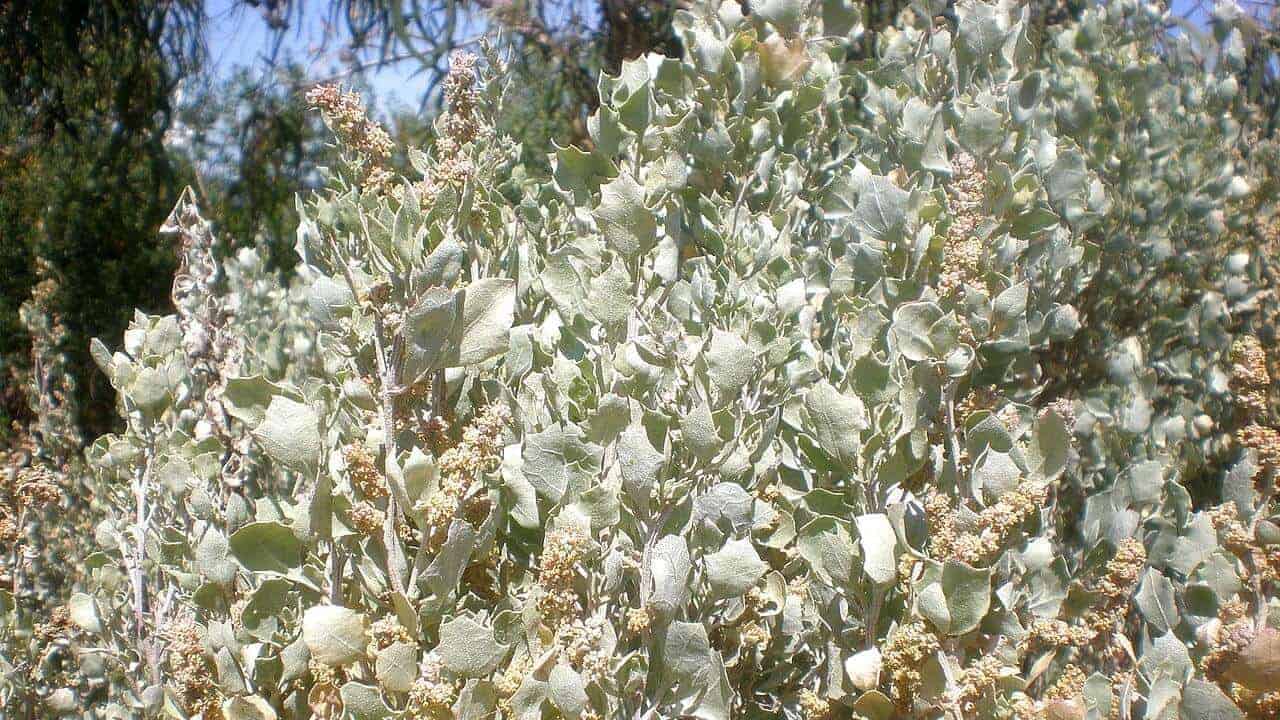Old Man Saltbush
Atriplex nummularia
Old Man Saltbush is a fast-growing shrub commonly used today as a livestock grazing plant. However, both the seeds and leaves are viable bush tucker, with the leaves salty in flavour and rich in protein, antioxidants and minerals. This species occurs naturally in WA, SA, NT, VIC, NSW and QLD.
Old Man Saltbush leaves may be treated like a leafy vegetable, enjoyed blanched, sautéed, wrapped around meat or fish, used in salads, or for stuffing poultry. Alternatively, they may be dried and used as a herb or sprinkle.
Harvest Saltbush leaves by simply plucking or cutting, taking only as much as you need. The plant may be left to grow, ensuring a year-round supply.
Though Saltbush tolerates drought, salinity and sandy soil in the wild, young plants will struggle to establish in conditions that are too dry and barren. Choose a rich and loamy, but free-draining soil, and water well in the weeks after first planting. Saltbush is suitable for full sun and part shade, but protect from hard frosts. Leaves are grey-green, small (2-3cm) and irregularly shaped, but will grow larger and more vegetable-like in hothouse conditions.
This plant is a woody shrub that can reach up to 3m in height. It may be grown in the ground or kept smaller in pots, if harvested frequently. With regular pruning, it makes a great gap filler or edible hedge.
Noongar names
- Purngep
- Pining
- Binga
Old Man Saltbush grows mostly during the warmer season. Plant growth slows noticeably below temperatures of 10°C, but should pick up again in Spring and Summer. To maintain growth rate throughout the year, move your plant into a heated greenhouse or a sunny spot in the home.
When should I fertilise my Old Man Saltbush, and what should I use?
Apply a slow release fertiliser at the start of Spring.
What is eating my Old Man Saltbush leaves?
Known pests attracted to Old Man Saltbush are red-legged earth mite, lucerne flea and scale. These can be treated with blasts from a water hose, or with applications of a natural soap spray. Follow the instructions on the label. Various species of caterpillar may also be found feeding, but this plant usually recovers quickly once the caterpillars mature.
- Emu Ravioli
- Kangaroo rolled in wattle seed, pickled muntries, coastal greens & sandalwood nuts
- Barramundi cooked over paperbark and lemon myrtle
- Bush Tomato Soup with Saltbush Chips & Wattleseed Damper
- Old Man Saltbush Rice Crackers with Nasturtium Dip
- Seared Kangaroo Fillet With Illawarra Plum Sauce
This Plant Is Available As A Dried Herb From Our Shop

Suitable for full-sun

Suitable for part-shade

Suitable for pots

Height 2-3m
Width 1-2m

Tolerates drought

Tolerates sandy soils

Tolerates salt

Attracts bees & insects

Suitable for gaps

Suitable for hedging/screening


